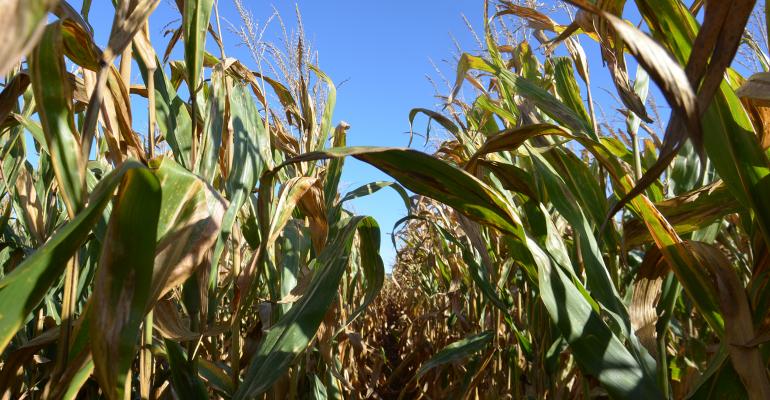Slow-maturing, fungicide-treated corn function of season

Corn Pest Beat: Agronomists caution against letting an odd season affect a key future management decision.
Dec 04, 2019
My dad was frustrated that our corn matured so late. He blames part of it on applying fungicides. It stayed healthy but was slow to reach black layer compared to neighboring fields. Is this a legitimate concern, or was it just a happenstance due to a very strange, late growing season?
The panel of Indiana certified crop advisers answering this question includes Steve Gauck, Beck’s sales agronomist, Greensburg; Andy Like, Syngenta, Vincennes; and Jeff Nagel, Ceres Solutions agronomist, Lafayette.
Gauck: Fungicides are used for two reasons: to protect plants from disease and to improve overall plant health. We want plants to stay healthy longer to give us a larger time frame for grain fill. This, in turn, gives us better-standing corn and higher yields with larger kernel size. What were the extra bushels you received compared to your neighbors for having healthy corn late into the season? We planted corn late in 2019, and it should have been slow to reach black layer and mature. Your corn most likely died naturally, whereas other fields died prematurely. I feel this is more weather-related then fungicide-related. We expect corn with fungicide to mature slightly later and hold a little more moisture, but it’s normally not dramatic.
Like: Often slow drydown of corn treated with fungicide is due to the crop staying alive longer, thus increasing time to black layer. Typically, when we see this gap in maturity, it’s when disease pressure was severe and caused premature death in untreated fields. So, it’s not so much that the treated corn didn’t dry down. It’s more that the untreated corn died and dried down prematurely. Typically, differences in yield and standability far outweigh moisture difference.
Nagel: One goal of high-yield corn is to maintain good plant health during grain fill. Corn plants that stay green until black layer allow for higher photosynthesis and more complete grain fill. Plant health treatments in a normal year often will be perhaps a point or two higher vs. nontreated corn at black layer since plants didn’t shut down grain fill prematurely. That’s a good thing. This often leads to higher yields.
With normal planting times, black layer may occur by mid- to late September, with many good in-field drying days yet to occur. By harvest, moisture difference is negligible. A difference of 18% vs. 17% corn is very manageable.
2019 was unprecedented in delayed planting. June-planted corn didn’t reach black layer until mid- to late October, depending on maturity — sometimes later than predicted. Why some late-planted corn didn’t “adjust” growing degree days to maturity isn’t certain but may have been related to high sucrose content delaying physiological maturity. This was observed in untreated and treated fields.
Effective drydown days become fewer due to shorter day lengths and cooler temperatures, and very slow by early to mid-November. Thus, plant health treatments on June-planted corn may have started at a higher moisture content at black layer and stayed wetter through the fall. This would have been due to a later start in drydown and fewer good in-field drying days.
I wouldn’t let the odd 2019 season cause a change in management strategies. If foliar diseases or plant health hybrid responses suggest a positive return on investment, make the application.

